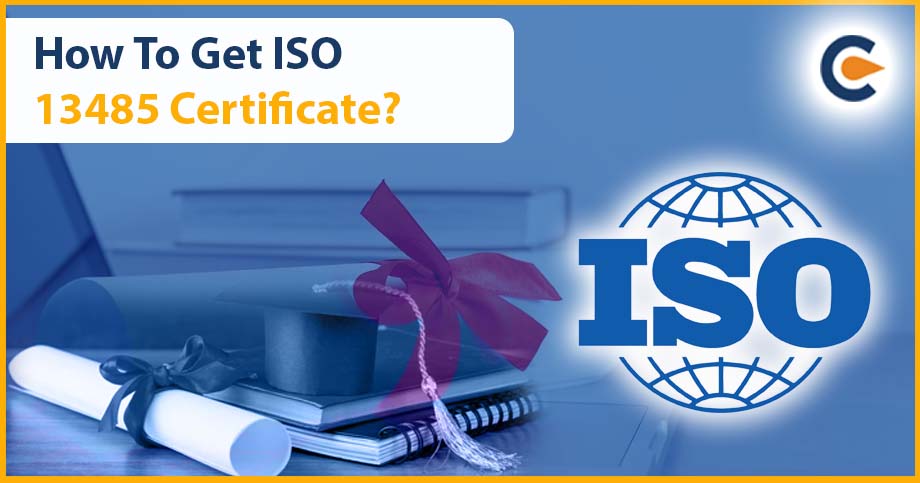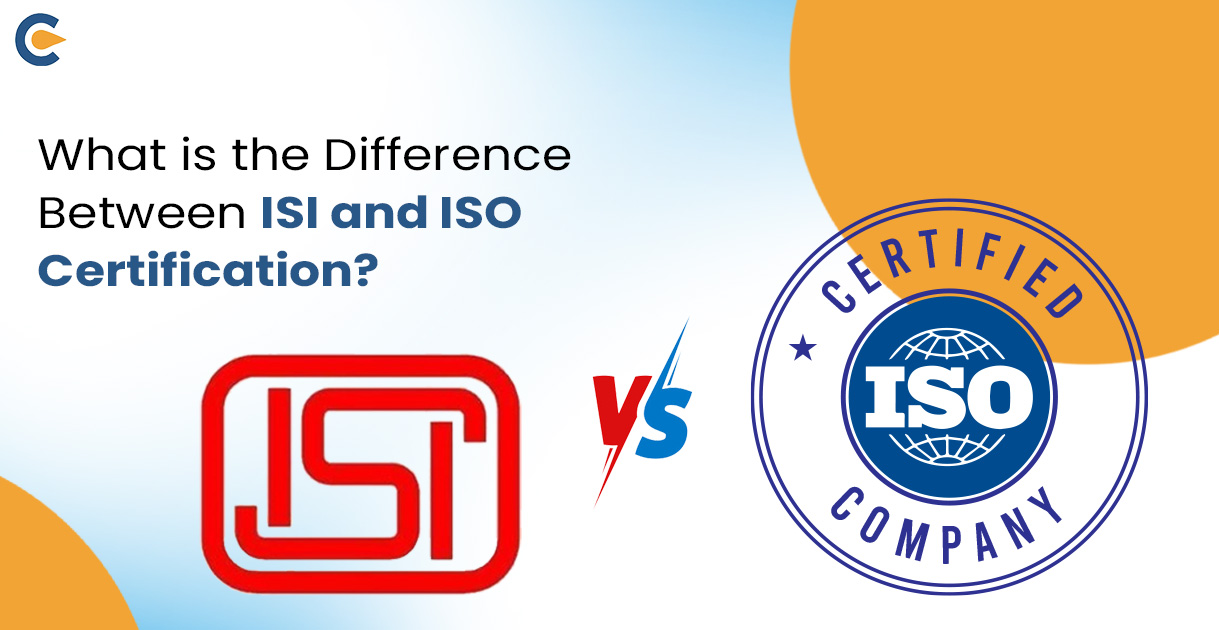According to ISO 13485:2016, a Quality Management System[1] (QMS) must meet certain criteria in order to produce medical devices that are compliant with applicable regulations and client needs. Requirements of ISO 13485:2016 are applicable to companies regardless of their size and regardless of their nature, except when explicitly mentioned. While requirements are mentioned as being applicable to medical equipment, they also apply to any related services that the organization provides. The ISO 13485 standard is divided into eight sections, the first three of which are an introduction and the last five of which contain the requirements that must be included in the Quality Management System. The five major sections cover different topics such as Measurement, Analysis, and Improvement; Quality Management System; Management Responsibilities; Resource Management; Product Realization. In this blog, we will discuss how to get ISO 13485 Certificate.
What is ISO 13485 Certificate?
- A company that is certified to ISO 13485 is either engaged in the production of medical devices or offers related services. As recommendations and a framework, ISO 13485 Certificate aids businesses in establishing their quality management systems.
- Simply explained, ISO 13485 is a collection of rules established by The International Organization for Standardization and intended for use as a quality management system by medical device manufacturers. On the other hand, there is a significant distinction between adhering to ISO 13485:2016, the medical device quality management systems standard, and ISO 13485 certified.
- In order to assist medical device manufacturers in creating quality management systems that develop and sustain the efficacy of their processes, ISO 13485 was created. It guarantees that medical devices are consistently designed, developed, produced, installed, and delivered in a manner that is safe for their intended use.
- Anyone may assert compliance with the requirement. Yet in order to be certified, a recognized certification organization must adhere to the requirements. You must maintain the effectiveness of your quality system and submit to annual surveillance audits as well as a re-certification audit once every three years if you want to keep that certification.
Importance of ISO 13485 Certificate
Safety and quality management go hand in hand in the manufacturing of medical devices, and neither can be compromised. Throughout every phase of the life cycle of a medical device, including the stages following production like delivery, service, and maintenance, requirements like those outlined by ISO 13485 are carefully upheld.
Organizations utilizing ISO 13485 can participate in any phase of the life cycle of medical devices. Design, development, production, distribution, and servicing, as well as auxiliary tasks like upkeep and customer assistance. For medical device companies to compete for customers’ attention, ISO 13485 is becoming more and more essential. This is related to the decrease in the prevalence of customer audits (2nd party audits) and the increase in 1st party (internal) and 3rd party (external, for certification) audits.
Process to get ISO 13485 Certificate
Following is the process to get ISO 13485 Certificate:
1) Creating a Quality System Plan: Planning is the initial stage in every quality system. When discussing how to develop a quality system, the Plan-Do-Check-Act (PDCA) Cycle or the Deming Cycle are frequently used as examples. To deploy modifications to your QMS, you must document the quality plans.
To establish a thorough quality system, you must, however, divide the “doing” phase of the PDCA cycle into numerous smaller activities as opposed to one large one. A quality system cannot be implemented by one person alone. The quality manager is not the only person responsible for quality systems. Everyone in high management is accountable for putting a quality system in place.
2) Regulatory Requirements: After choosing your target market for your medical devices, make sure your compliance with other medical device regulations is established. For instance, if you’re creating your quality plan for US medical device firms, you must adhere to 21 CFR part 820.
3) Documentation, Training, and Records: Your quality system’s process interaction should be defined in your quality manual. The records will provide light on what quality control is testing.
4) Management Review Process:
- Conducting Your First Management Review: Doing your management review only after you have finished your full quality system audit and started some corrective actions is advised to ensure that you have inputs for each of the 12 requirements in the ISO 13485:2016 standard. If at all practicable, you ought to carry out supplier audits for any contract sterilizers or manufacturers. To make sure that none of the necessary inputs are overlooked, it is advised to utilize a template for that management review that is arranged in the order of the required inputs.
- Conducting Your First Internal Audit: The goal of the internal audit is to confirm that the quality system is working as intended and to detect nonconformities before the auditor for the accrediting authority does. It is critical to conduct an internal audit that is more stringent than you anticipate for the certification audit in order to properly complete this secondary objective. Hence, the internal audit should last for the same amount of time as the certification audit, if not longer. A desk examination of procedures should not be part of the internal audit. Prior to approval, gap analysis on draught procedures should include a review of the procedures. The process approach to auditing should be used for internal audits, and the auditor should use a risk-based approach.
You will receive an internal audit report from the auditor following your internal audit. Also, you should anticipate the internal auditor’s conclusions and the identification of opportunities for improvement (OFI).
5) ISO 13485 Certification Audit:
To confirm that the quality system has been implemented, the certification authority is required to conduct interviews with process owners and review samples of records. The auditors for the certification body will normally confirm that your business has carried out a comprehensive quality system audit and at least one management review.
Last but not least, the auditor will typically choose a procedure like corrective action and preventative action (CAPA) to ensure that you are recognizing issues with the quality system and addressing those issues.
The Stage 2 ISO 13485 certification audit’s audit objectives particularly call for assessing your quality system’s performance in the following areas:
- Relevant legal requirements
- Technologies relating to products and processes
- Tech support materials
Every procedure will be examined for conformity to ISO 13485:2016 and the relevant laws. The auditor will also choose a sample of each process’s records. Any nonconformity found by the auditor during the audit must be noted, and corrective action planning must start right once. You should speak with the auditor during the audit or the closure meeting if you have any questions about what to expect from the examination of the root cause, corrections, corrective actions, and effectiveness checks. You have 15 calendar days from the time you get a finding to submit a corrective action plan to your MDSAP auditing organization (AO).
Although ISO 13485 Certificate is a voluntary standard, it proves conformity with medical device directives and most European Union quality management system criteria. Being accredited to ISO 13485 Certificate has numerous other advantages in addition to harmonizing regulatory requirements.
Conclusion
Standardization is optional. Nevertheless, I must emphasize that the ISO 13485 standard is advised for Medical Device Firms in Europe. Why? Because you need to locate a Notified Body that will approve it in order to obtain a certified quality system. For medical device firms, there is only one notified organization that can certify you for ISO 13485. They can still examine the Quality System you created, but they will undoubtedly find numerous grounds to claim that it is not compliant. In actuality, ISO 13485 is your only option if you want to market medical devices in Europe.
Also Read:
Why The ISO Registration Has Creditability In India: Process Of ISO Certification
A Complete Guide On How To Obtain ISO Certificate? Benefits, Penalties And Fees
Important Aspect Of ISO Certification That Every Manufacturer Needs To Remember











